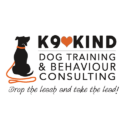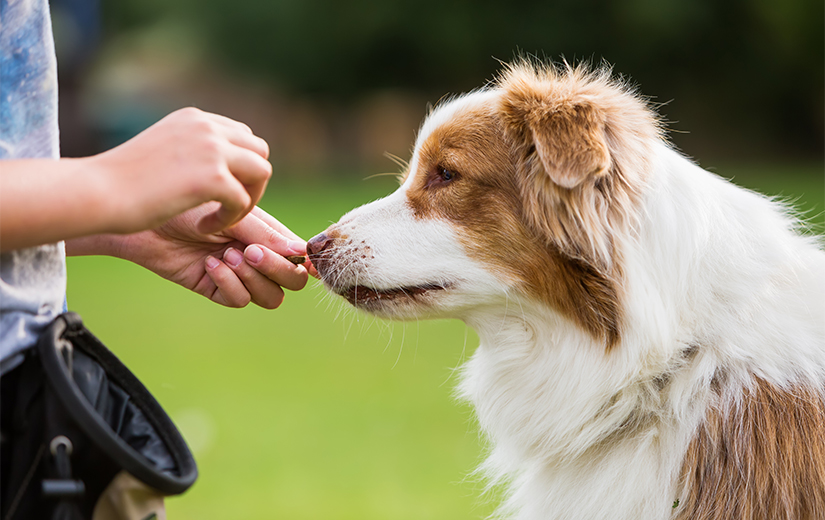Kind Corner: How to use treats in dog training – Part 2

 After exploring the importance of treats in dog training, AnimalKind accredited trainer Carrie Lumsden of K9 Kind Dog Training & Behaviour Consulting explains how to use treats correctly to avoid bribery in part 2 of this three-part series for Kind Corner.
After exploring the importance of treats in dog training, AnimalKind accredited trainer Carrie Lumsden of K9 Kind Dog Training & Behaviour Consulting explains how to use treats correctly to avoid bribery in part 2 of this three-part series for Kind Corner.
Let’s get reading!
If you haven’t already, check out Part 1: Go ahead, use treats!
Part 2: Using treats to teach and not as a bribe
Using treats correctly in training: how to avoid bribery
Treats are a reward, not a bribe.
In the beginning stages of teaching a new behaviour, we use treats as a lure, like a magnet, to show our dogs what we want them to do. But in the second step of teaching every new behaviour, we drop the treat lure and show our dogs with an empty hand.

Step 1: Lure the behaviour with a treat in hand.
Step 2: Lure the behaviour with an empty hand and still reward your dog with a treat from your other hand or treat bag.
Step 2 is crucial. Once your dog has learned what the behaviour is, if treats continue to come before the behaviour, they become a bribe. This improper technique can create a scenario where your dog may only do what’s asked of them when food is present.
A reward is something that happens after your dog performs the desired behaviour.
Tips to correctly use treats in dog training:
- Motivate your dog, so they want to do what is being asked of them, rather than coerce them into it.
- The more you reward a behaviour, the more likely your dog will want to perform the same behaviour again.
- Be very generous with treats in the beginning stages of teaching new behaviours to create a reinforcement history.
- Ask and reward the same behaviour in different environments, so your dog learns “sit” means “sit” no matter what is happening around them.
Once your dog learns the new behaviour and gets it right 90% of the time in different contexts, then, and only then, reduce the amount of food you use as a paycheck.
Manners and boundaries around food
People often say that their dog jumps, begs, and loses their mind when food is present, particularly “human” food.
To your dog, human food is simply food. It isn’t the food that makes your dog lose their mind. It’s that somewhere along the way those behaviours were rewarded, so your dog keeps trying them.
Resolve nuisance behaviours by teaching your dogs how to sit and wait patiently around the dinner table using reward-based training. Treats are the fastest and easiest way to teach a dog a new skill, and it does not have to come at the cost of other undesirable behaviours.

Incorporate real-life training rewards from the beginning
Food works very well to train dogs because they love it, and it’s quick to deliver. But if you only reward your dog with treats, they will only respond for a treat.
There are other real-life rewards your dog values, like your attention. Incorporate real-life rewards into your training from the beginning.
If your dog jumps on you to say “Hello”, teach them to earn your attention with a sit. Ignore all other rambunctious behaviour to avoid rewarding the wrong behaviour. You and the attention you give your dog is the reward. Simply do not reward bad behaviour with any attention. Never reward undesirable behaviour.
Is it possible to fade treats in training?
Yes! If you use treats properly in your training, you should be able to eventually fade treats out completely for many behaviours, or just the occasional use of food once the behaviour is fluent, which mean your dog can perform with ease and accuracy in various situations.
First, teach your dog what the behaviour is and create a reinforcement history with each behaviour in various contexts and among various distractions. When your dog is fluent at any single behaviour, then they are ready to perform the same behaviours with less food motivation and more real-life rewards.
I will dig deeper into fading treats in training in part three of these treat series.
If you want to learn why using treats is recommended, part one will show you why it is a good idea to use treats.